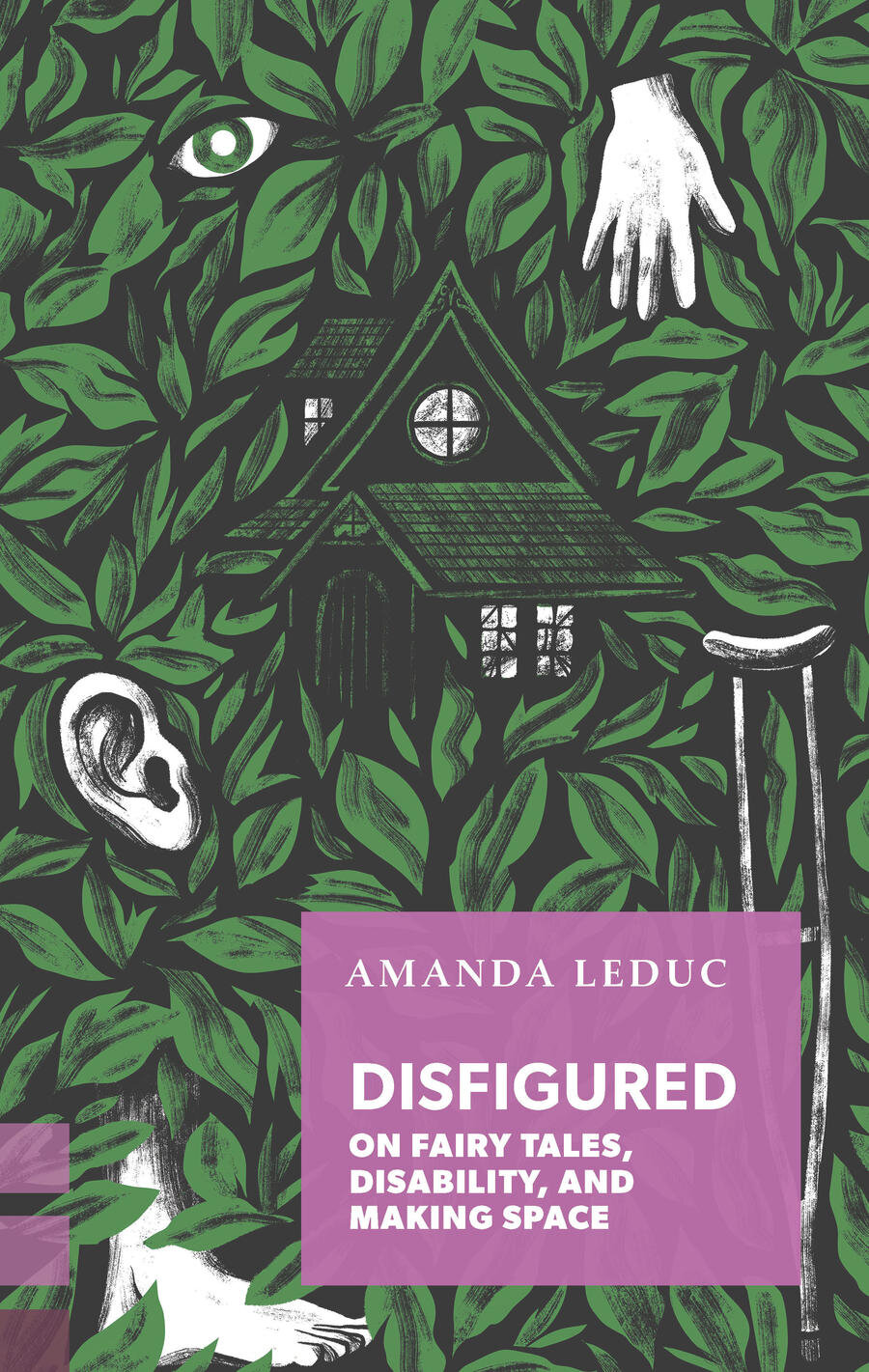From Disney to Game of Thrones, 'Disfigured' Meditates on Disability and Goodness
Image courtesy of Coach House Books
Imagine: you turn on that Disney film and the protagonist picks up their cane or pulls out their wheelchair and goes off on that quest. A princess puts on her glasses, a prince gets up from his walker and calls his faithful guide-dog companion to his side.
It may be hard to imagine. Throughout the history of fairy tales and legends, if a prince or princesses ever had a brush with disability, their story centred on a personal quest ending in cure as a reward for the protagonist’s goodness, personal improvement, and virtue. More often, disability was a trait associated with villains, whose visible differences served as a signal for their evil nature. Either way, disability primarily served as a symbol, a metaphor for something bigger.
In her non-fiction debut, Disfigured: On Fairy Tales, Disability, and Making Space, Amanda Leduc takes the reader through a broad exploration of disability in many of the stories central to our cultural fabric and those more obscure (such as the tales of “Hans My Hedgehog” and “The Maiden Without Hands”) with a series of reflections on how centuries of retold stories have shaped the way we all view ability. The book spans the genres of historical research, cultural criticism, memoir, and more. Woven through analyses of “Beauty and the Beast” and “Snow White” are stories from the author’s personal experience with disability, copies of doctor’s notes throughout a childhood of hospital visits, research on the origin eras of fairy tales, and histories of the genre’s most notable authors.
This ambitious approach is the book’s strength, allowing Leduc to tie in discussions of the deeply dangerous narrative of disease and indifference employed by United States President Donald Trump to a history of the ableist “changeling” phenomenon in Irish mythology. The broad subtitle, “On Fairy Tales, Disability, and Making Space” is apt in describing the scope of the book, which flits from the origin of the evil stepmother trope as one distinctly born from the period’s high rate of maternal mortality to the author’s experience getting taunted in elementary school for having unshaved legs.
But this broad approach also has its drawbacks. Like a princess’s proverbial walk through an enchanted wood or Hansel and Gretel’s journey to find their way home, Disfigured was at times unfocused and meandering. With perhaps one too many rhetorical questions to the reader and etymological parentheticals, the absence of clear differentiation in issues covered between chapters—and thematic continuity between topics discussed within them—made the central arguments at times difficult to follow or obscured entirely.
Though an inclusive definition of fairy tales allows for a greater scope of analysis, the book’s frequent digressions from a discussion on fairy tales made forays into the Marvel universe, modern-day royal family, Game of Thrones, and Harry Potter feel unfocused. In the chapter on disability within the Marvel universe, the author quickly notes in one sentence, “Daredevil loses his sight but develops supersonic hearing as a response to this bereavement; Charles Xavier of The X-Men loses the ability to walk but grows ever more powerful in the realm of the psychic mind. Jean Grey, a.k.a. Dark Phoenix, is ostracized and shunned because of how people’s marveling turns into fear.”
With this, Leduc eschews a deeper analysis of the surprisingly complex and often disappointing canon of disability among these and other Marvel protagonists, spending far more time discussing the short story “The Bloody Chamber,” not part of the Marvel universe, instead. In a section that focuses heavily on the stories of Rapunzel and Sleeping Beauty wherein the author weaves her own experience with depression, she concludes by stating the titular characters are, “probably not depressed in this story,” adding, “neither is it likely that [Sleeping Beauty] had Kleine-Levin syndrome, a condition where individuals experience prolonged episodes of sleep,” making it difficult for the reader to grasp how these stories and their analyses relate to the author’s central thesis.
However, Leduc makes one thing clear and beautifully so—fairy tales are fundamentally fantastic, but that doesn’t mean that they are beyond reproach in their depiction of real issues and identities. On a steady diet of morality tales where appearance is an unsubtle proxy for internal traits, entire generations can grow up believing that to look or move differently from the norm is a sign of untrustworthiness or evil. Of course, we live in a world devoid of witches, magic potions, and spells. But even when we know these tales are rooted in embellishment and fiction, stories matter. They shape our world and the way we perceive the real people and places around us. It’s about time they stopped doing disability a disservice.
Thank you to Coach House Books for providing Shrapnel with a media copy for review.
Disfigured: On Fairy Tales, Disability, and Making Space is available now for purchase at the Coach House Books website and in bookstores across Canada.
Kiran Misra
is a freelance writer and reporter, currently covering criminal justice in Chicago and South Asian American politics across the continent. She’s a proud midwesterner hailing from Cedar Rapids, Iowa and is currently based in Rome, Italy. You can find some of her other pieces here or find her on twitter here.



